The Nexus 7 (2013) Review
by Anand Lal Shimpi on August 22, 2013 6:00 PM ESTCPU Performance
The while the original Nexus 7 was fast for the money, the new Nexus 7 is just fast. Moving away from NVIDIA to Qualcomm, ASUS and Google settled on the APQ8064 Pro. Although we originally assumed this would be a quad-core Krait 200 based SoC, Brian's teardown revealed the part number 8064-1AA. What's special about that part number is it implies newer Krait 300 cores, making the SoC effectively a Snapdragon 600.
The CPU cores can run at up to 1.5GHz, putting it a bit lower than what we've seen from Snapdragon 600 based phones (e.g. HTC One tops out at 1.7GHz, while the US SGS4 hits 1.9GHz).
I was curious as to the impact of the lower frequency when combined with the potentially higher chassis TDP so I compared the Nexus 7 to the US Galaxy S 4. I turned to Geekbench because it offers a nicely woven mixture of single and multithreaded benchmarks, letting me look at peak available single core performance as well as what happens when multiple cores are active and working.
In this first graph we're looking at the first Krait 300 core running the workload. I've zoomed in to a small portion of the benchmark so we can get a better idea of CPU behavior:
The Nexus 7's CPU0 is almost always pegged at 1.5GHz whereas we see a lot of bursty thermal management on the smaller SGS4. This isn't unexpected, but what ends up happening is the sustained performance advantage drops from a peak theoretical max of 26% down to a more reasonable average gain of ~8%.
I was curious to see if multithreaded workloads showed any different behavior. Here we're looking at the fourth CPU core (CPU3). Note that it's not always active, which is why you see parts of the graph drop down to 0KHz. Once again we see similarly static behavior from the Nexus 7. Even with all four cores active, when you need the performance the Nexus 7 delivers a full 1.5GHz. These tests are short enough where we don't see tremendous swings in frequency, but once again we do see some frequency modulation in a smaller chassis.
The end result is that the Nexus 7's 1.5GHz Krait 300 cores are slower than what you'd get in a Galaxy S 4, however the gap isn't nearly as large as you'd expect it to be thanks to the larger chassis and how the platform is tuned. The Nexus 7 can run at 1.5GHz more consistently than Snapdragon 600 based phones can run at 1.7/1.9GHz.
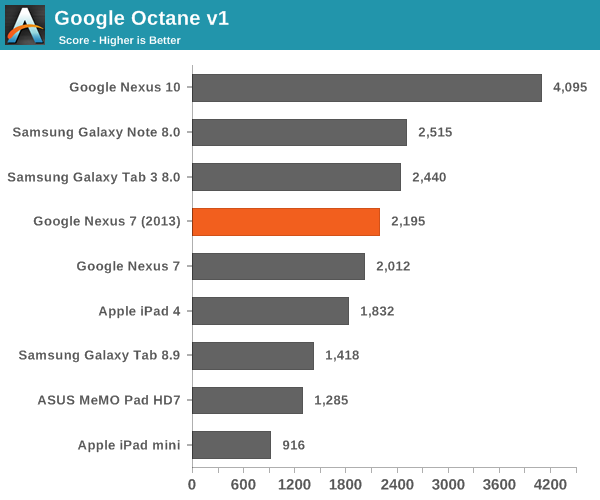


The GPU
Qualcomm seems to be frequency binning here, which is standard industry practice. Using binning to create these different SKUs gives Qualcomm pricing flexibility and also gives it the option to give large customers special treatment.
On the graphics side Qualcomm's Adreno 320 GPU makes an appearance. Clock speeds are also limited to 400MHz, compared to 450MHz for the high-end Snapdragon 600 implementations we've seen.
The APQ8064-1AA's dual-channel memory controller is populated with four x 16-bit DDR3L-1600 memory devices, giving the Nexus 7 a healthy amount of memory bandwidth. Peak memory bandwidth available to the APQ8064-1AA is 12.8GB/s, equalling what's available to Apple's A5X in the 3rd generation iPad with Retina display. Tons of memory bandwidth is obviously a pre-requisite for driving a high resolution display, and the combination of DDR3L-1600 and the Adreno 320 GPU delivers a butter smooth UI in all well written Android apps.
Although CPU performance is somewhat middle of the road compared to the rest of the landscape, GPU performance is faster than any other Nexus device on the market - and pretty much faster than any other similarly sized tablet:
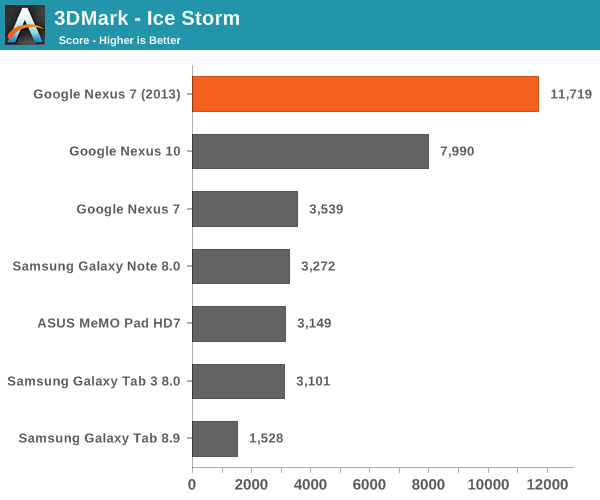
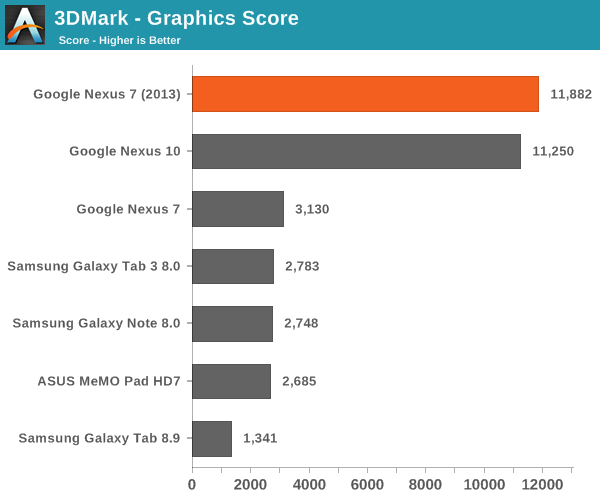
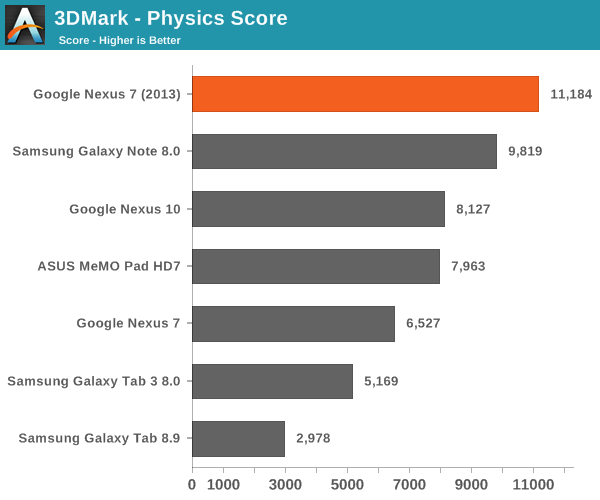
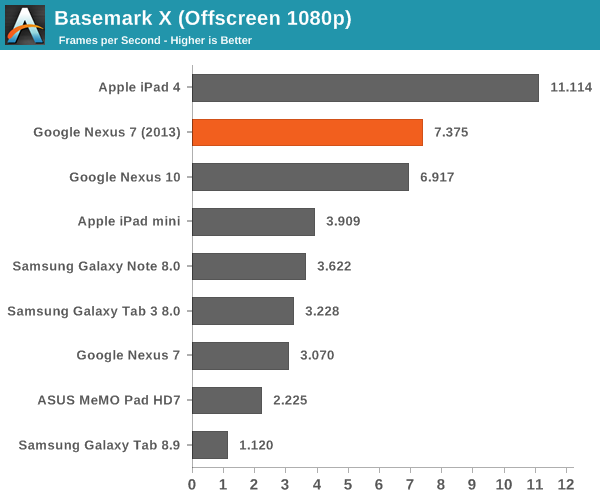
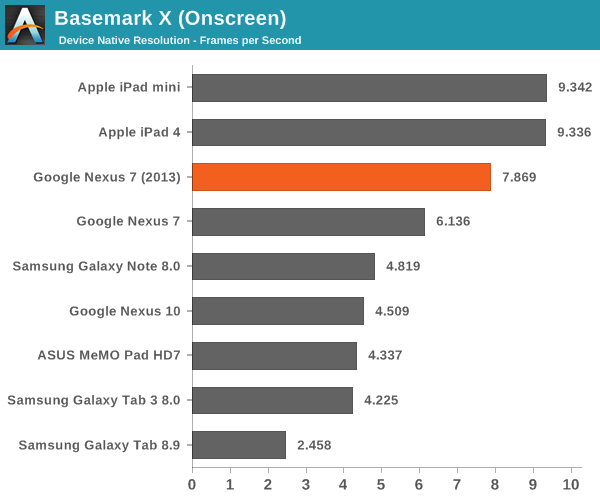
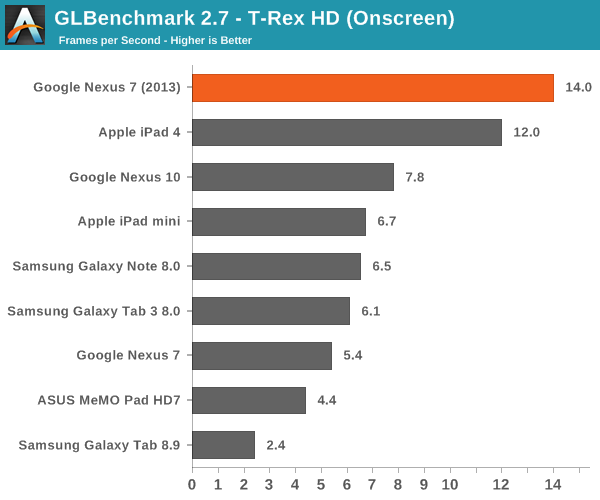
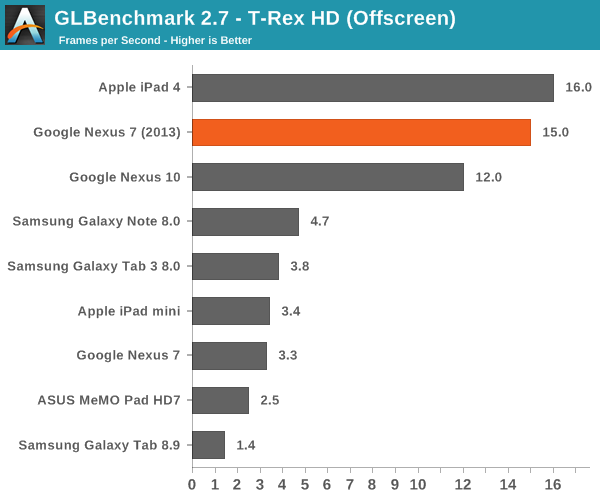
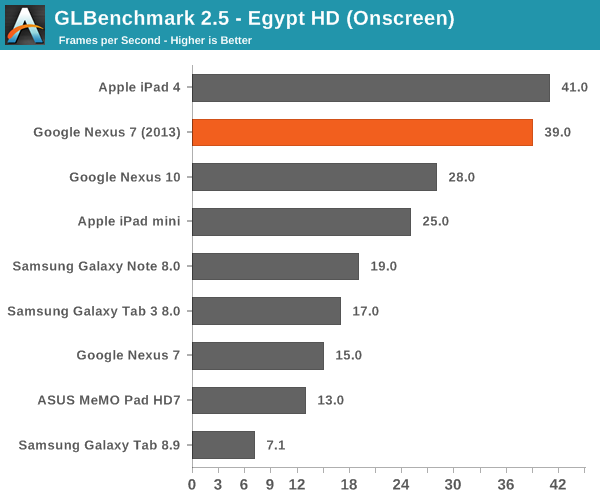
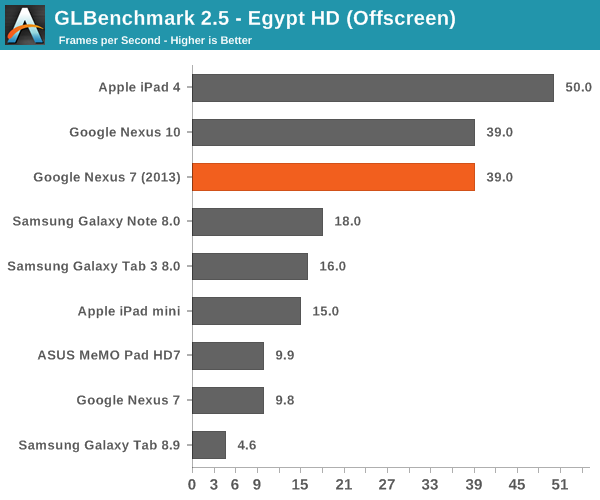
I played Modern Combat 4 as well as Shadowgun, both demanding 3D titles, on the new Nexus 7. Both titles appeared to render at the Nexus 7's native 1920 x 1200 resolution, and both appeared to do so at around 30 fps.


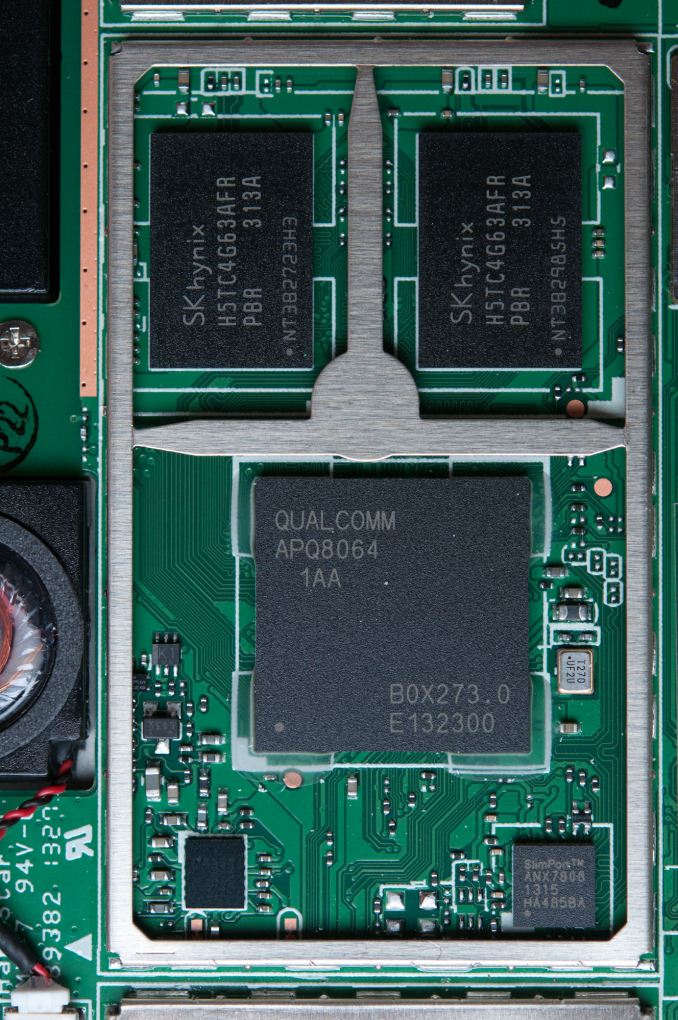
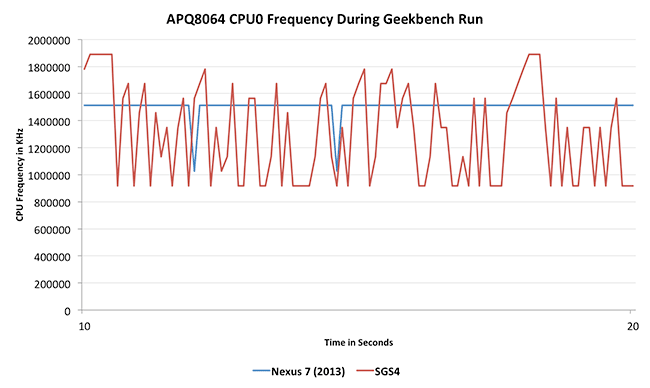
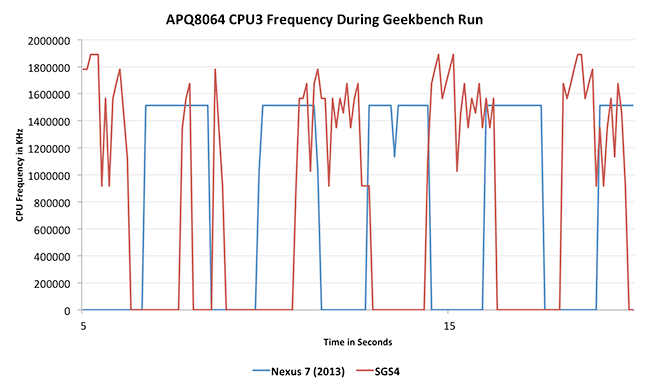








202 Comments
View All Comments
jl0329 - Wednesday, October 9, 2013 - link
Your idiocy made my laugh out loud. You are truly clueless, aren't you?bznotins - Thursday, August 22, 2013 - link
Is this new version polarized? The 2012 Nexus 7 was on the horizontal axis, precluding from me using it in that orientation as a nav device with my (also polarized) sunglasses on. Looks like a great tablet though.OzedStarfish - Thursday, August 22, 2013 - link
Yes it is, for my unit it is almost entirely blocked when in landscape unfortunately.amdwilliam1985 - Thursday, August 22, 2013 - link
Good read, this is one of the very few article that actually praises on the new Nexus 7's battery life :)max1001 - Thursday, August 22, 2013 - link
I was expecting Gold since the review was all praises. lol.ikjadoon - Thursday, August 22, 2013 - link
If Anandtech compared this to all other 7" Android tablets, it'd be a gold. But, he might be taking the bigger picture: for myself, 7" is just too small, as well.It's portable, though, and for some people, that's more important.
Impulses - Friday, August 23, 2013 - link
I'd prefer 8.9"... But until there's a Nexus 8 I'd rather deal with the size than any of the shortcomings on other current tablets.max1001 - Friday, August 23, 2013 - link
I think it's better to have both. I have a 7" and a 9". Nexus 7 easily fit in my coat inner pocket and I can bring it with me everywhere. It's also a lot easier to handle on the subway. I can grip it by the side with 1 hand and not worry about dropping it. I user the 9" to watch Netflix and web browse when I am at home.mmarafie - Thursday, August 22, 2013 - link
I remember the old days when anandtech was the best tech site for reading awesome, detailed, and unbiased reviews. It seems those days are long gone, the more I read the reviews here (especially by Anand) the more I realize the site has become basically an advertising and marketing place for Apple. There are so many tell-tale signs in this review and others where its quite obvious..DukeN - Thursday, August 22, 2013 - link
Agreed.I automatically ignore Apple/iOS mentions and figure out my own comparisons to the rest.
Anand, perhaps this can be a feature for you.